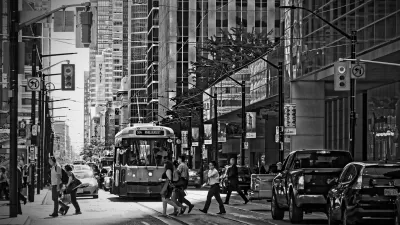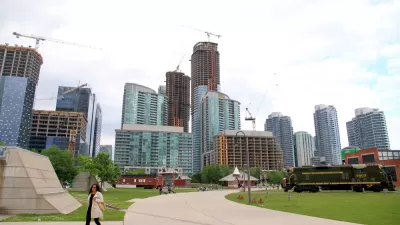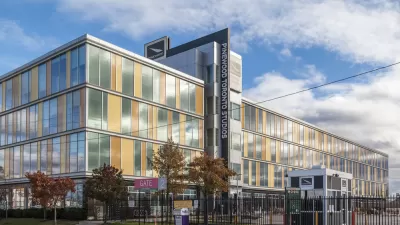Inclusionary zoning, a policy tool designed to ensure new developments include a required number of affordable housing units, will soon be the land of the land in Toronto, Ontario. Not everyone is a fan of the new policy.

The Toronto City Council has adopted a new inclusionary zoning policy, according to multiple reports.
For background on the city's development of its new inclusionary zoning policy, an article by Matt Elliott explains how inclusionary zoning works (as does Planetizen's Planopedia) and digs into the politics of inclusionary zoning. On that latter subject, Elliott writes:
But here’s the catch: to really make this work, some angry homeowners of Toronto — the kind who you might call NIMBYs, and who show up at neighbourhood consultation meetings to angrily complain about how new developments are too tall, or too dense, or cast too many shadows, or will totally make traffic worse — are going to need to chill out.
For context on the city's housing market, and how soaring prices and a lack of affordable options are compelling this policy change, Elliott cites a recent report by Social Planning Toronto, which found that 30,862 affordable rental units—providing enough housing for an estimated 74,686 people—could have been produced between 2011 and 2020 if the city already had an inclusionary zoning policy in place.
An article published by mondaq updates the story after the City Council's adoption of the inclusionary zoning (IZ) framework, including details like where IZ applies. Specifically, the application of inclusionary zoning is limited to areas surrounding certain transit station areas known as PMTSAs as well as to three Inclusionary Zoning Market Areas. The latter are defined as "areas in the City that have experienced the greatest amount of new housing supply, significant price escalation and growth in rental prices, and where the City has determined that its inclusionary zoning requirements can be imposed without jeopardizing development viability."
An opinion piece for Marcus Gee, written for the Globe and Mail [paywall], expresses skepticism that the city's new IZ policy will be effective:
Whether it was a good day is another question. Interventions of this kind are usually associated with a cost. When governments force private companies to keep prices down, companies will find a way to compensate for it in one way or another. Developers who are asked to charge lower prices on some devices are required to charge more for the rest. In fact, owners and tenants of market units will be forced to subsidize the inclusive zoning.
FULL STORY: City Of Toronto Introduces Inclusionary Zoning Framework

Alabama: Trump Terminates Settlements for Black Communities Harmed By Raw Sewage
Trump deemed the landmark civil rights agreement “illegal DEI and environmental justice policy.”

Study: Maui’s Plan to Convert Vacation Rentals to Long-Term Housing Could Cause Nearly $1 Billion Economic Loss
The plan would reduce visitor accommodation by 25% resulting in 1,900 jobs lost.

Planetizen Federal Action Tracker
A weekly monitor of how Trump’s orders and actions are impacting planners and planning in America.

Wind Energy on the Rise Despite Federal Policy Reversal
The Trump administration is revoking federal support for renewable energy, but demand for new projects continues unabated.

Passengers Flock to Caltrain After Electrification
The new electric trains are running faster and more reliably, leading to strong ridership growth on the Bay Area rail system.

Texas Churches Rally Behind ‘Yes in God’s Back Yard’ Legislation
Religious leaders want the state to reduce zoning regulations to streamline leasing church-owned land to housing developers.
Urban Design for Planners 1: Software Tools
This six-course series explores essential urban design concepts using open source software and equips planners with the tools they need to participate fully in the urban design process.
Planning for Universal Design
Learn the tools for implementing Universal Design in planning regulations.
Caltrans
Smith Gee Studio
Institute for Housing and Urban Development Studies (IHS)
City of Grandview
Harvard GSD Executive Education
Toledo-Lucas County Plan Commissions
Salt Lake City
NYU Wagner Graduate School of Public Service





























